Every person has at least one pair of jeans in their wardrobe, and most have several pairs. Today, manufacturers offer a huge range of this item of clothing. They can be wide, narrow, classic, worn, so everyone can find those that will satisfy their desires and needs. If you can easily find the right size, then every second person has to adjust the length.
How to fix the problem
If you have a sewing machine at home and you have the skills to use it, then the process of hemming jeans will not cause any problems. If you don’t have one, and you also have no experience in sewing, then you should carefully follow all the instructions and recommendations. In this case, you can hem jeans yourself without a machine and not go to an expensive studio.
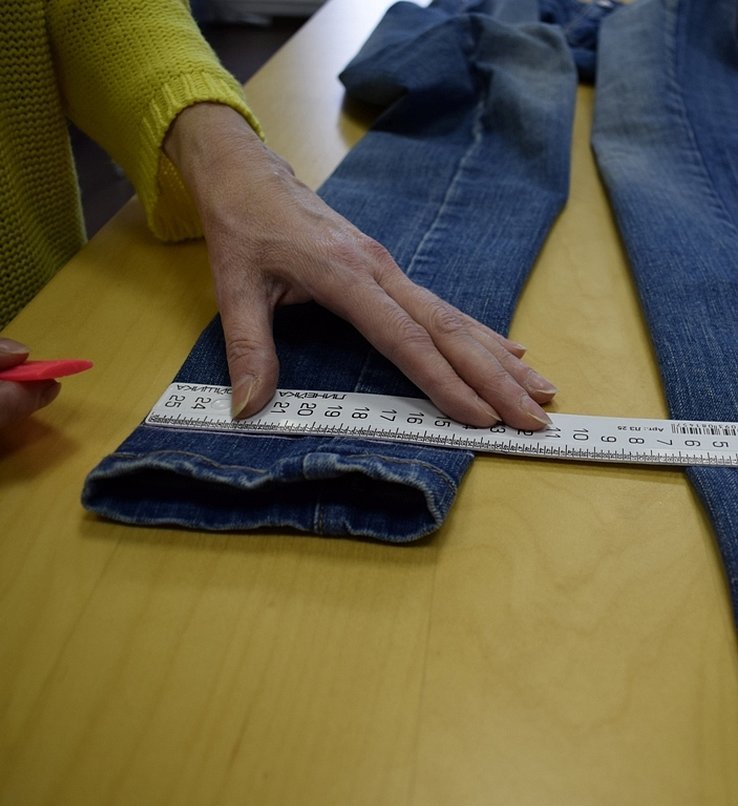
Preparation before cutting
Before you start cutting out jeans, you need to think carefully about how you will wear them. If you plan to wear high-heeled shoes with them, then the fitting should take place in them.
Please note! Even a few centimeters can spoil the style and appearance of trousers.
Determining the length requires close attention. Experts take measurements on the right leg of the trousers and then symmetrically transfer them to the left. But as practice shows, each person has their own features of the figure silhouette, so it would be more correct to make marks on each of the legs. You should not align the length, focusing on an old pair of trousers, even if they are the same model and the same size. This is explained by the fact that each pair of trousers can lie differently when put on.

Before you hem jeans manually without a machine, you need to prepare the following tools:
- scissors;
- tailor's pins;
- special needles for denim;
- threads;
- chalk or disappearing marker.
You should also prepare an iron with steam, which you will need to iron the product with after hemming.
Rules of work
To ensure that your jeans look beautiful and neat after hemming, it is important to complete the entire process carefully and in accordance with all step-by-step recommendations.
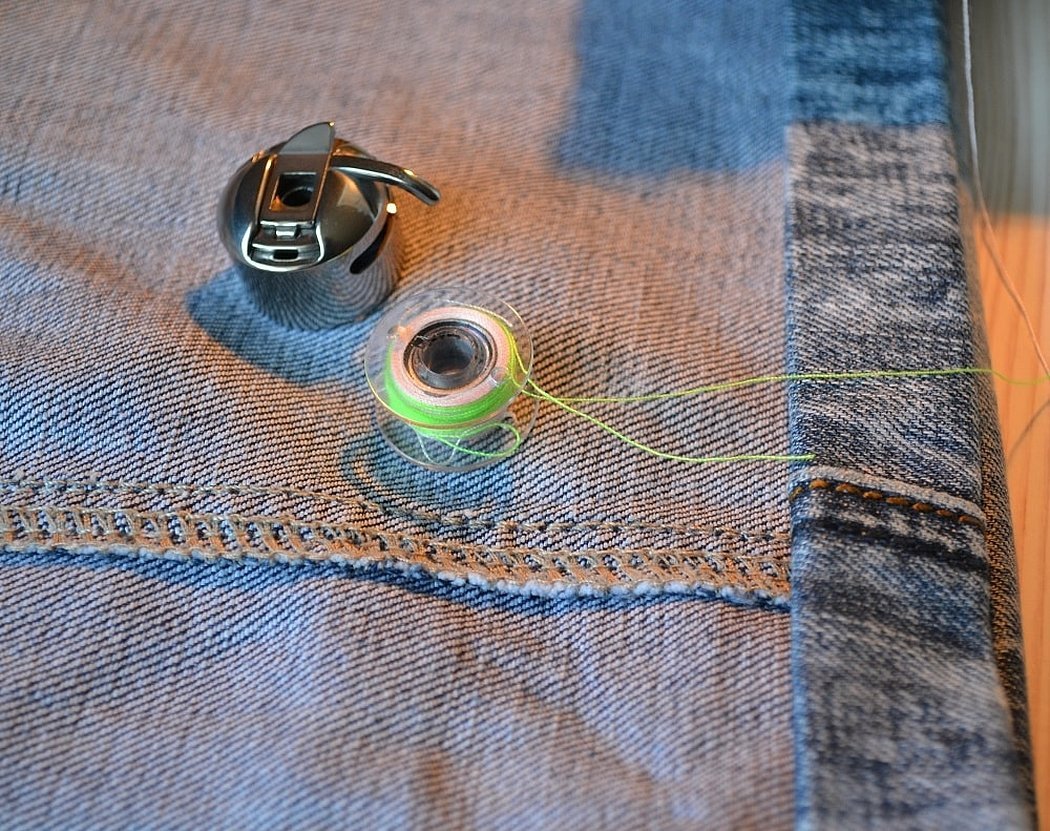
How to choose threads
Before you start hemming, you need to buy the appropriate threads. For this, their thickness should be normal. The most important thing is that they completely match the factory ones.
The threads need to be wound on a bobbin, it is better if there are two threads at once. The needle thread can be left alone and its color does not matter. When buying threads, it is best to have a sample of the cut parts with you.
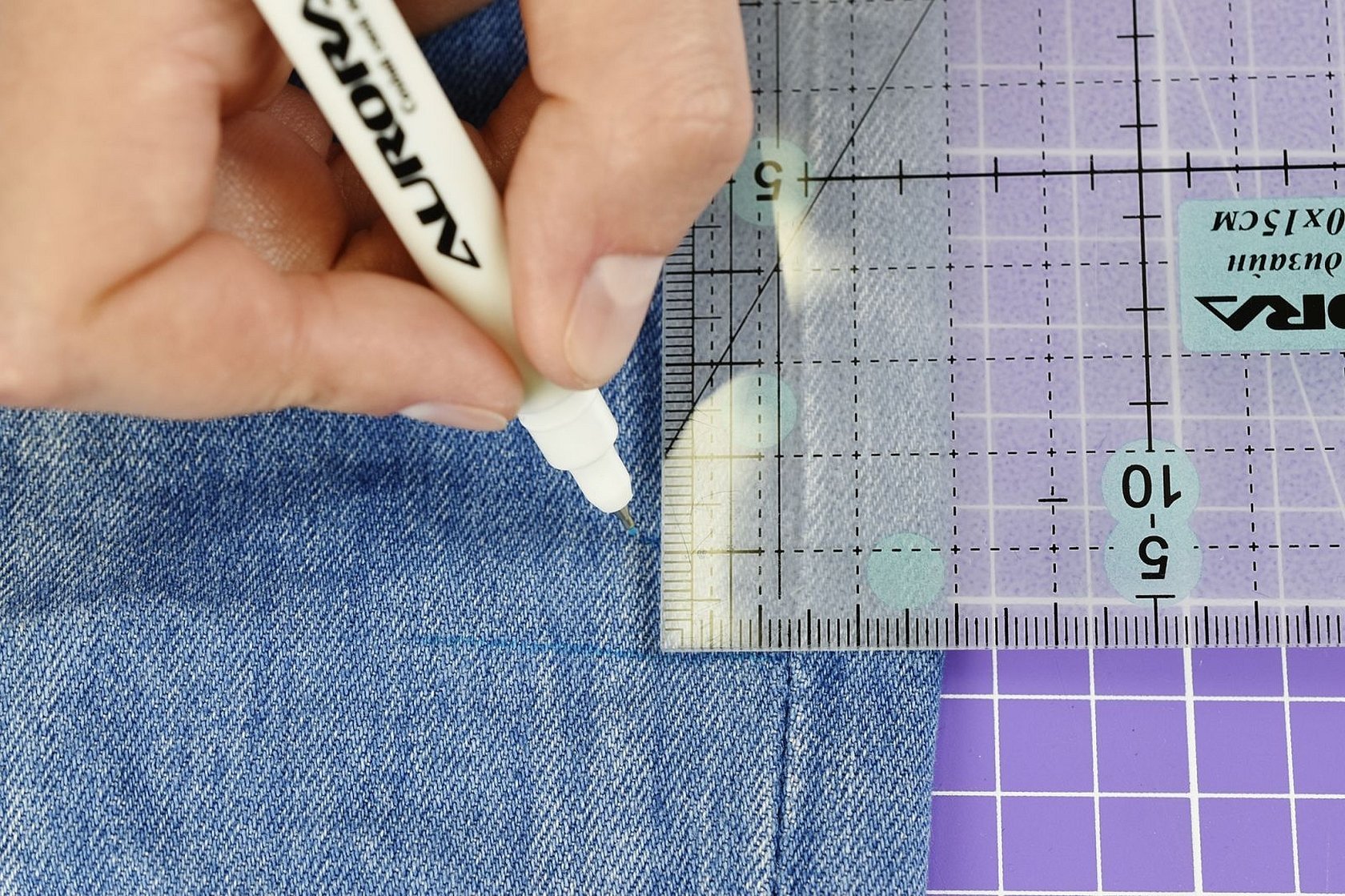
How to Mark a Hem Line on Jeans
It is necessary to hem jeans after they have been hemmed. If the trousers are wrinkled, they must be ironed first. After that, you can begin to determine the shortening line and the hem width.
At home, you can mark the line standing in front of a mirror. You must do this in the shoes you plan to wear when wearing these trousers. Having decided on the length, you need to tuck the excess inward and pin it. You can also mark the hem line with chalk in one or more places on the back side; you don’t need to mark it on the front side.
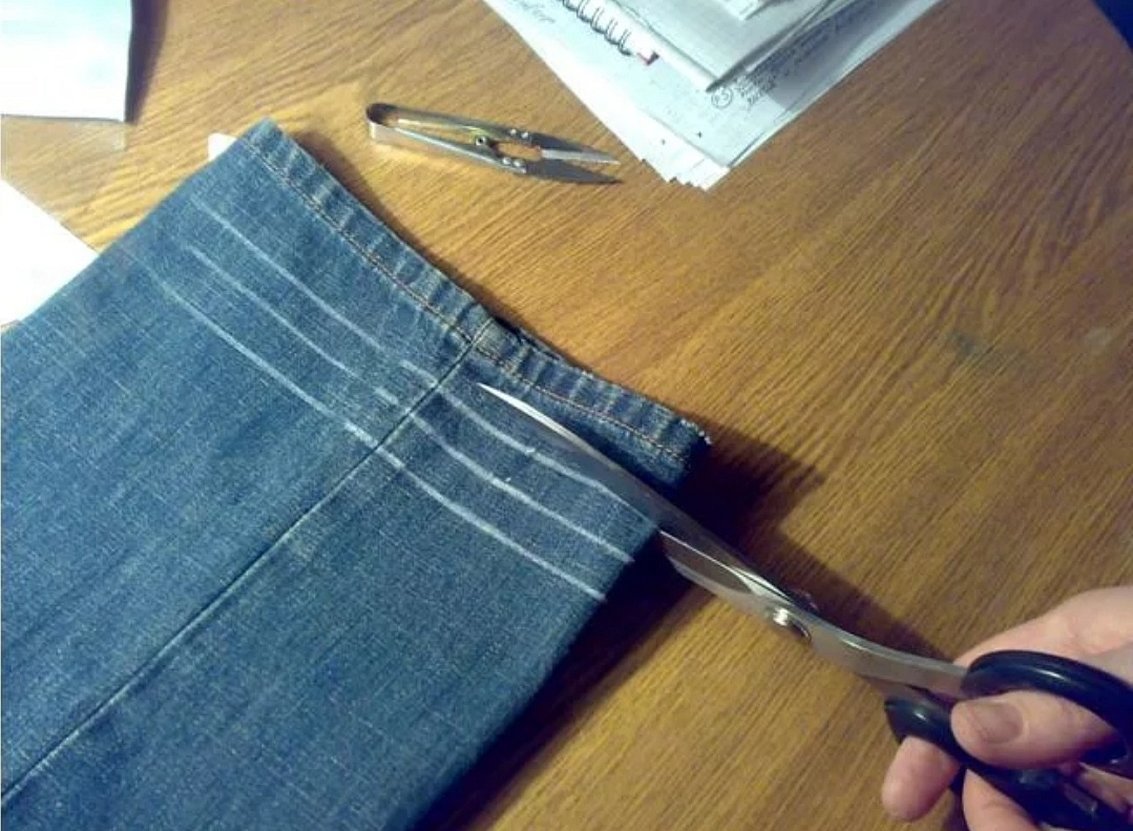
Subsequently, the turn-up is marked with a solid line around the circle along the marks. To do everything accurately, you need to use a ruler. Below the drawn line, you need to put aside 3 cm and draw another line. It is along this line that the trouser leg should be shortened. All the above actions are also performed on the other side.
How to shorten correctly
There are several ways to shorten jeans yourself without a sewing machine. The choice will depend on personal preferences and the expected result.
The "Bachelor" Method
A personal quick way to shorten jeans without a sewing machine was invented by unmarried men. This life hack has become popular among the fair sex. After all, thanks to it, you don’t need to sew anything. Its main feature is simplicity and originality. To do this, you need to fulfill the following conditions and actions:
- iron the jeans twice to the desired length;
- the second time you need to add one centimeter;
- trim off excess material;
- using Moment glue, coat the first fold from the inside;
- carefully wrap it inside and press it down for a few minutes.
All similar actions are performed with the second leg. This old method helps to shorten trousers without hemming and keep them in this form for a long time.

Hemming trousers with adhesive tape
Today, special hot-melt tapes are very popular for manual processing of the bottom of jeans. They are made of polyamide and provide a strong adhesive bond, as well as guarantee the preservation of the aesthetic appearance of the product for a long time. In this case, the trousers will not be hemmed using threads. The tape is glued using a hot iron. Thus, you can hem both new and old products.
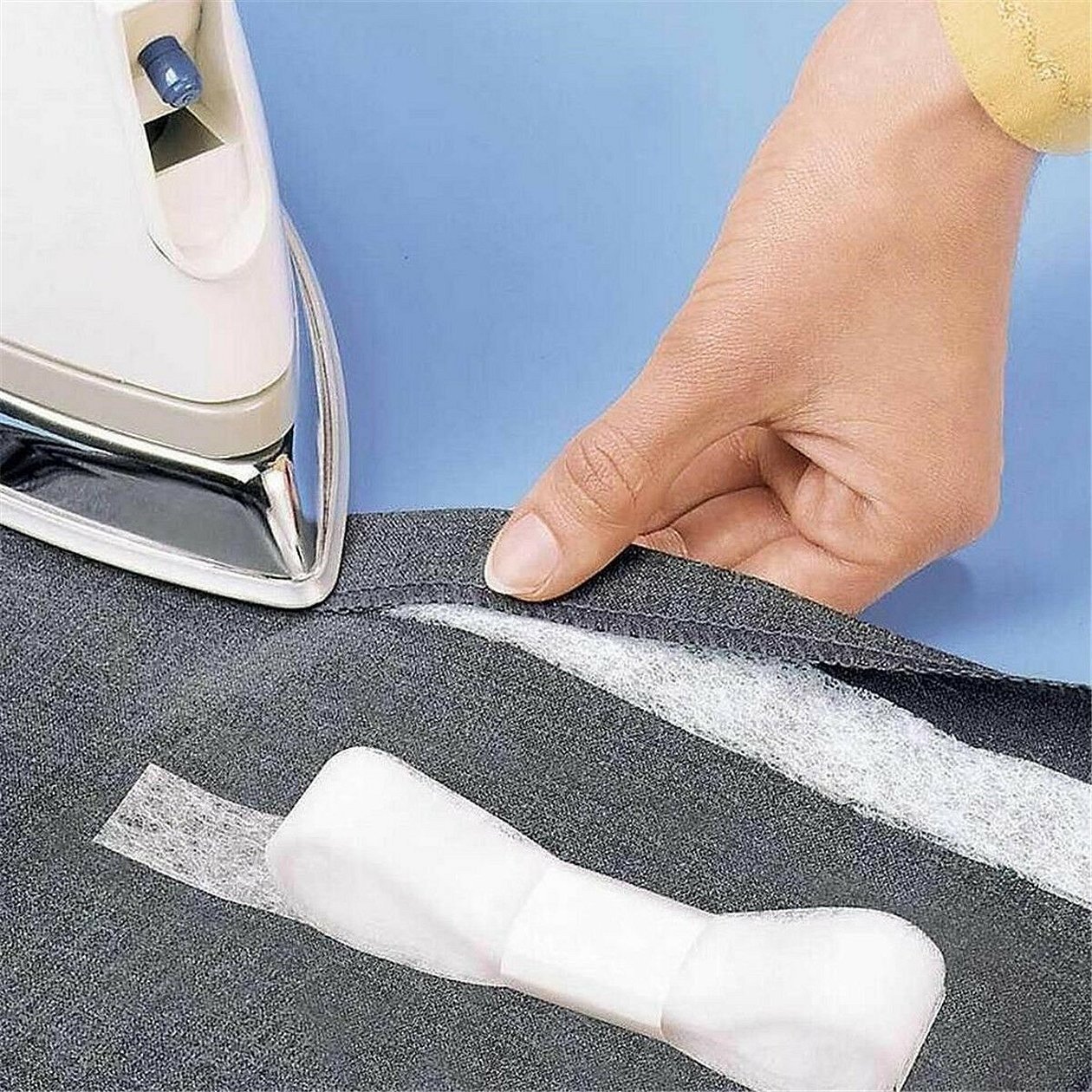
Instructions for hemming while preserving the factory seam
An integral element of clothing is a decorative seam. Many people, having bought jeans that fit them perfectly at the waist, but have an unsuitable length, wonder how to preserve the factory finish.
To do this, you need to follow the following procedure:
- determine the length and width of the hem from the wrong side;
- lay out the item and straighten out all the folds;
- measure the width of the hem upwards from the intended length;
- draw a line parallel to the floor and measure 1 centimeter down;
- draw a second line and perform all the above steps on the other leg;
- perform a cut along the second line;
- take the scrap with the factory stitching and set aside 1 cm from the hem;
- draw lines and cut off excess.

Jeans should be hemmed while preserving the seam as follows:
- attach trim pieces to trousers;
- align the cuts and chip them inside and on the sides;
- carefully sweep the parts;
- stitch from the factory seam to 1 mm;
- make cutouts of allowances before the line a few millimeters;
- trim the bottom allowance to 4 mm;
- iron the edges to the hem;
- from the factory seam, apply a line 1 mm away and overcast the allowances.
This simple method allows you to hem jeans while preserving the factory seam.
Prices for jeans hemming work
In the studio you can order inexpensive treatment of the bottom of jeans. The cost of the service varies from 200 to 900 rubles.*
Despite the variety of styles and sizes of jeans, it is problematic to find a model that would ideally fit your height. Problems often arise when choosing clothes for a child or a short person. Of course, you can have clothes made to order, but not everyone can afford it. You can solve the problem by hemming your jeans yourself. You don’t even need a sewing machine; you can trim and hem them yourself.
*Prices are valid as of September 2019.




